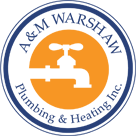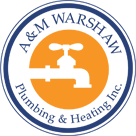The city is typically responsible for maintaining and repairing the main sewer lines, which are crucial for the proper disposal of wastewater from homes and buildings. These main sewer lines are the primary conduits that collect wastewater from smaller lateral sewer lines and transport it to the municipal treatment facilities. Understanding the division of responsibilities between the city and property owners helps in managing sewer line issues effectively and avoiding potential disputes.
Main Sewer Lines
Main sewer lines, also known as trunk lines or collector lines, are the large pipes that carry wastewater from multiple properties to the municipal treatment facility. These lines are usually located underground and are the responsibility of the city or municipal authority. They are designed to handle significant volumes of wastewater and are maintained by the city to ensure proper functioning and prevent overflows. Regular inspections and maintenance of these lines help to prevent blockages and ensure a reliable sewer system for the community.
What Part Of The Sewer Line Are The Landlords Responsible For?
Landlords and property owners are generally responsible for the sewer lines that connect their properties to the main sewer lines. These responsibilities include the maintenance and repair of lateral sewer lines, house sewer drains, and, if applicable, septic tanks. Proper understanding and management of these responsibilities are essential for preventing sewer line issues and ensuring proper sanitation.
Lateral Sewer Lines
Lateral sewer lines are the pipes that connect a property’s sewer system to the city’s main sewer line. Property owners are responsible for maintaining these lines, which include both the upper and lower lateral sections. Any blockages or damage to lateral lines must be addressed by the property owner to avoid potential backups or sewage spills.
Upper Laterals
The upper lateral sewer lines extend from the property line to the point where the sewer line connects to the city’s main sewer line. These lines are often located beneath the street or sidewalk and are the responsibility of the property owner. Regular maintenance of upper laterals is crucial to prevent issues such as clogs or leaks that can affect the property’s sewage system.
Lower Laterals
Lower lateral sewer lines run from the property’s building or house sewer drain to the upper lateral connection. These lines are also the responsibility of the property owner. Maintenance and repairs for lower laterals involve clearing any blockages or addressing any damage to ensure smooth wastewater flow from the house to the main sewer line.
House Sewer Drains
House sewer drains are the pipes within a property that carry wastewater from fixtures such as sinks, toilets, and showers to the lateral sewer lines. Property owners are responsible for the upkeep and repair of these drains to ensure proper functioning and prevent potential backups within the property. Regular inspection and cleaning of house sewer drains help to avoid clogs and maintain a healthy plumbing system.
Septic Tanks (if applicable)
For properties not connected to municipal sewer systems, septic tanks are used to treat and manage wastewater on-site. The maintenance and servicing of septic tanks are the responsibility of the property owner. This includes regular pumping of the tank, inspection for leaks or damage, and ensuring proper function to prevent environmental contamination and health hazards.


